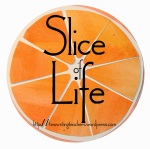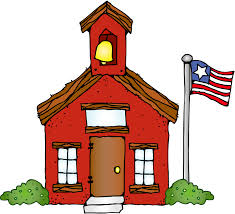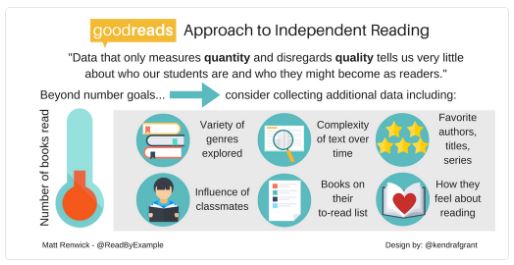Repeated Reading: Part 2

Photo by Pixabay on Pexels.com
If . . .
I were to engage in Repeated Reading for whole class Tier 1 instruction, what would that look like?
Which of these would signal the beginning of quality instruction?
A. “Read the passage. Record your time. Reread the passage. Record your time. Read a third time. Record your time. Turn in your passage and your scores.”
B. “Listen as I read this poem that I have put on the screen. Watch and listen especially for the ‘goal’ for my reading. Class, today I am sharing one of my favorite poems because I want you to listen for both the rhyme and rhythm in this poem because – it’s almost like a song! . . .”
C. “Today, I am going to demonstrate one way that readers read fluently and with prosody. Remember we have been talking about prosody which means sounding like ‘talk’ and your goals may be: volume, expression, accuracy, or phrasing. Listen carefully to be ready to tell your partner which you think is my goal focus as I read the first stanza . . .”
What are you thinking?
Which one is the best choice?
Of course, it depends . . .
It’s hard to tell from just a few sentences, BUT:
A. Telling. No instruction. NO!
B. Rhyme and rhythm are important, but what is the driving WHY?
C. Student goals sound like they are individualized and the talk about fluency and prosody sounds connected to student goals.
Focus
Continue to Study
Focus
Study the Students
What do they need?
What’s your purpose?
(In case you missed it, Part 1 Here)
#SOL18: Records
What matters?
Personal Best?
State Best?
National Best?
World Best?
What motivates you?
Does it depend on the topic/event?
Internal motivation? External motivation?
Private goals? Public goals?
Or a simple desire to “Be Better”? To “Do Better”?
What drives you?
(The record setting heat over Memorial Day began this thinking. Do I “set records” in my life? Is that a part of my goal-setting? Should it be?)

Questions, Questions, Questions!
Thank you, Betsy, Beth, Deb, Kathleen, Kelsey, Lanny, Melanie, and Stacey for this weekly forum. Check out the writers, readers and teachers here. 
#SOL18: #OLW

Is it the luck of the draw? The New Year? A need for focus?
Whatever draws you to #OneLittleWord, do consider how that word will impact you for the next year. I’ve been considering words since #NCTE17, that gathering of so many talented friends with so much learning, love, and laughter all rolled together.
Synonyms of my word from Dictionary.com:

Disquisitive caught my eye. (” 1. Relating to disquisition; fond of discussion or investigation; inquisitive.”) I tested it out and thought it would score well in Words with Friends2 but it just didn’t have the “OOMPH” I wanted in my #OLW. Prurient also caught my attention in a negative way as that was not a synonym that I was expecting.
What’s your best guess at this point?
What one word is a synonym for those in the Word Cloud above?
It’s all about word choice.
“CCSS.ELA-LITERACY.CCRA.R.4
Interpret words and phrases as they are used in a text, including determining technical, connotative, and figurative meanings, and analyze how specific word choices shape meaning or tone.” (Link)
My history of #OLW
- 2014 Transfer
- 2015 Focus
- 2016 Joyful
- 2017 Brave
A visual for another hint . . .

Got it?
Just seven letters . . .
__ __ __ __ __ __ __
What is your #OLW?
How and when will you reveal your #OLW?
Thank you, Betsy, Beth, Deb, Kathleen, Lanny, Melanie, and Stacey for this weekly forum. Check out the writers, readers and teachers here. 
And the answer is . . .
c
u
r
i
o
u
s . . .
When were you 100% sure that you had identified the correct word? How important are our words? What precise meaning do your words carry? Do your perceptions match those of your students?
So much to consider in the area of building “word knowledge” in 2018!!!
2:00 pm – Changed the background
5:00 pm – added final graphic

Opening Doors to be Curious in 2018
#DigiLitSunday: Balancing Goals & Needs

When teaching, goals and needs often become blurred due to perspective. Whose goals and needs are the basis for planning, instructing and assessing? When are student voices heard? When are parent voices heard? When does the community have input?
Today’s topic seemed like an easy one:
Balancing Goals and Needs
YET
This morning I had a lengthy conversation with Mya over coffee. Her needs seem simple: food, water, shelter, hugs and kisses, time to play. How many of those do I define? How many of those does she define? I laughed last week as she went nose to nose with an opossum and it was not playing. As Mya barked, the opossum snarled back. Not the quiet, placid Mya who walks among the deer without a sound. Not the quiet Mya who allows Harry the cat to tell her what to do. So I’ve been wondering what are Mya’s needs and what are her goals?
On this foggy Sunday morning Mya has no need to head outside. She’s curled up on the love seat napping. She’s already had her breakfast, her treat, a bit of conversation and she’s now in her own little world.
Are her needs met? Are her goals met?
Conversation with Mya about basic needs is quite simple. If either her food bowl or water bowl are empty, she comes and tells me. Her nose on me is quite telling. No words are needed.
And when she’s ready to play. OMG! YES! She’s bouncing. Or she’s patiently waiting. That stare. Those eyes!
And of course, I’m well trained. When she’s standing, nose against the door, tail wagging, it’s time to open the door for her!
Are her needs met? Are her goals met?
Because we live in the country, Mya has a LOT of unsupervised, unstructured time outside. No pen, no fences, no boundary fencing. I like to think that her time outside gives her the opportunity to be an independent free spirit. (Mya is a Lab and loves recognition for her skills.)
What about balancing my goals and my needs?
My initial draft of this post included a list of goals and a list of needs. As fast as I listed something in either category, I was deleting it and moving it to the other side. And then . . . . there were the list items that HAD to be in BOTH categories! Ay, yi, yi – not productive! Way too much thinking!
Last week I had the pleasure of learning with and from Cassie Erkens (@cerkens) author of Collaborative Common Assessments: Teamwork. Instruction. Results. One important point she made was that we must understand the DNA (Desires, Needs, and Assets) of ALL students.
Do we even “know” that information about our students?
So that long conversation with Mya led me to realize this morning over coffee that it doesn’t really matter whether I can specifically IDENTIFY all my goals and needs. Instead living my life so that I BALANCE my goals and needs in service of being brave and remaining a life-long learner is important.
At home:
Family, Comfort, Love, Peace, Fun, Faith, Joy, Reading and Writing
At work:
Fun, Learning, Collaborating, Equity, Joy, Reading and Writing
In life:
Fun, Family, Reading, Writing, Joy, Faith and Brave Support for a Better World

Can you tell what I am working to “Balance”?
How do you balance your Goals and Needs?
How do you make sure that all voices are included?
Check out the posts at Margaret Simon’s “Reflections on the Teche” for more ideas / thinking about balance!
#SOL17: Goals and Technique Cards Reprise

I’m still reeling from the information on goals in Jan Burkins and Kim Yaris’s post about the 1% of the population that set goals and regularly review them. It’s a short post. Go read it here. The numbers are staggering and the consequences for learning are dire if teachers are NOT setting goals in their classrooms.
Let’s Review: How important are clear learning targets for students?
Hattie, Fisher and Frey say that their effect size is .75 for “Teacher Clarity”. Teacher clarity could easily transfer to deeper student understanding of the desired learning target. Clarity in knowing what the target looks like would make the target easier to meet..
What kind of goals should teachers be setting for writing instruction?
“Teach the writer, not the writing.
Teach strategies for elaboration and development.
Teach for transfer.
Teach for increased student independence.”
What could goal setting look like?
One way it could go is through the use of the goal and technique cards from this post. As a writer I could pull out the techniques that I have already taught for the writing types this year. I could list them in descending order by the frequency with which students are using the techniques. Then I could check the on-demand writing for the new unit and see which techniques are present. This is one example of using data to determine goals.
Another way it could go would be to set up an inquiry study. Students could have the technique cards and could self-assess their use and / or understanding of the writing techniques. Then these students could use the goal cards to set some writing goals for themselves. Maybe the goals will be about structure, development OR transfer! Maybe students can begin to be “better than the 1%” if they have:
choice
voice
and time
to practice using the techniques
and goal-setting to improve writing across the text types.
Win/Win in Student Goal-Setting and Teacher Clarity!


Are goals for the day, month, or year?
Won’t there be a variety of goals and time lines? Perhaps there will be an over arching goal that all students will love to write that will have its own steps or mini-goals. Perhaps it will be to improve the quality of the students’ narrative writing during this unit. Perhaps it will be the goals for this week. But without clear goals . . . what learning path are you on?
How could you use the techniques cards, goal cards and teacher clarity of work to improve your own writing and/or student writing?

Thank you, Betsy, Beth, Dana, Deb, Kathleen, Lisa, Melanie, and Stacey for this weekly forum. Check out the writers, readers and teachers here.
#SOL16: Back to School
Joyful Learning!

Depending on your geographic location,
- you could have been in school already for over two weeks – Allison in Arizona,
- have completed one week with students – Justin in Kentucky and Kathryn in Minnesota,
- have students returning today – Julieanne in California or
- even have students waiting for floodwaters to recede like Margaret in Louisiana.
Whereever you live, the calendar is marching on, and school will soon begin.
In 2015 this back to school blog post focused on relationships and learning priorities while the 2014 post here included blogs and quotes and Lucy Calkins’ challenge to “outgrow ourselves as readers”. And more recently, this #DigiLit Sunday post was also about planning for the new school year.
Are you prepared? And what does that mean for you?
Is your room ready?
Have you added some alternative seating? Additional partner seating? How do you allow the students to have some say and choice in the room arrangement? What does your library look like? Are students able to easily access books in the classroom library?
Are your first instructional days planned?
How will you greet your students? What is your first Read Aloud going to be? Your first mini lesson for reading workshop? Writing workshop? Your own first demonstration writing piece? And what about that first poem?
“The First Day of School
I wonder if my drawing will be as good as theirs
I wonder if they’ll like me, or just be full of stares
I wonder if my teacher will look like mom or gram
And I wonder if my puppy will wonder where I am.~Aileen Fisher”
Have you set your goals for the year?
My wish is that every child will have joyful learning every day of school that will allow him or her to grow beyond belief in reading, writing, speaking, listening, thinking, math and research (science and social studies). Each classroom will have a skilled, enthusiastic and passionate teacher who focuses on meeting the needs of the whole child!

Not sure if you are ready? Need some more ideas? Sarah Brown Wessling writes about her pledge to students here or check out this NEA Back to School Guide!
Are you REALLY ready?
What are your planning priorities right now?
And what about personal priorities for your very own children? Are they starting a new school year as well? As a student? As a teacher? As a parent?
What rituals do you share with them?
My son and I had a first day “back to school tradition” of dinner out. Dinner out at a fancy schmantzy restaurant where we could talk about the first day of school and everything that happened away from the rush of meal prep or the stack of ever-present work. A joyful celebration of new beginnings!

Thank you, Betsy, Beth, Dana, Deb, Kathleen, Lisa, Melanie, and Stacey for this weekly forum. Check out the writers, readers and teachers here.
#SOL15 Finale: Top 10 Posts from 2015
I began this blog in October of 2012 because I believed that I needed to write publicly both to improve my own writing and because I encourage teachers to write for purposeful reasons. That fits with Betsy’s quote for today:
“Writing is an exploration. You start from nothing and learn as you go.
~E. L. Doctorow”
How am I doing with my goals? Wordpress conveniently compiles a lot of data about blog posts. Here are the most viewed posts from this site during 2015. The numbered titles are linked to the original post and a picture is included below the link for a reminder. (Four of these were a surprise as they were NOT written during 2015! See if you can guess which four!)

10. #TCRWP: Day 1 Writing Institute 2015

9. Focus: Informational Mentor Texts

8. #TCRWP: Day 2 Reading Institute 2015

7. #TCRWP: Day 3 Reading Institute 2015

6. #TCRWPL: Day 1 Reading Institute 2015


4. How do we know students are making progress in writing?

3. Close Reading in Kindergarten? Is it even possible?

2. #TCRWP and a Teacher’s Toolkit for Teaching Writing

- Lexile Level is NOT text complexity CCSS.R.10
“@amandalah: Careful of lexile: Harry potter, old man & the sea &Alexander & the horrible no good very bad day. All similar lexile. #TCRWP”
What are your top 10 learnings for 2015?
What data do you consider?
What are your goals?
How are you reflecting on 2015?
Tuesday is the day to share a “Slice of Life” with Two Writing Teachers. Thank you, Anna, Betsy, Beth, Dana, Deb, Kathleen, Stacey, and Tara. Check out the writers, readers and teachers here.
Most commented blog posts from 2015 (in 1-10 order)

One post that is on both top 10 lists! #SOL15 posts were seven of the 10 most commented on posts! YAY, Slicers!
Answer to which years were the most read blogs posted:
6 of the blog posts were originally published in 2015. Two were published in 2014 and two were published in 2013.
- 5-10 = 2015
- 2 and 4 = 2014
- 1 and 3 = 2013
Is Our Writing Improving?
How can we measure writing so students, parents, the community, and the teachers know that students are improving?
If this is our definition of assessment, we have many options for measurement.

If I am a student, I can use rubrics, checklists, my personal goals and feedback from peers, teachers, and those I communicate with through blogging, etc. to talk about what qualities are present in my writing now that were not there earlier in the year. This could be in the form of a summative reflection that is posted with two or three papers/writings that I believe demonstrate my growth and that I would have annotated with those specific qualities for a quarter or semester or across the entire year.
But what keeps a student writing on a daily basis? How does a student know that this week’s writing piece is better than the last piece? Or that this piece really was the perfect match for the audience and purpose? I believe that students need feedback to not only be able to “improve” their writing but also to have the language to explain what they are doing to others. Excitement about a topic can carry a student for several days, but at some point the enthusiasm may wane as the task of rewriting or revising becomes laborious.
John Hattie believes that feedback needs to include these factors:
“• focus on the learning intention of the task
• occur as the students are doing the learning
• provide information on how and why the student understands and misunderstands
• provides strategies to help the student to improve
• assist the student to understand the goals of the learning” Source
So a learner would need to know the task/goal, be able to explain what he or she is learning and have some strategies that enhance his/her understanding of the work. The checklists in the new Units of Study in Writing, from Lucy Calkins and the many, many talented folks at Teachers College Reading and Writing, would help meet those criteria especially if the students are involved in daily writing workshops that allow them to continually stretch and grow and there is a safety net provided by the teacher and peers.
Is this the only writing format that meets these criteria? No, other rubrics such as 6 Traits + 1 within a writing workshop model could also set up this learning and feedback environment for students. These environments would include clear writing targets, models and strategies for students to continually plan, reflect and self-assess. When working well, these classrooms are better than well-oiled machines; when not working well students might be saying, “I don’t know what to write.” or “What do YOU want me to write?”
How does that all fit in a writing workshop? Very, very carefully as a teacher combines both student-led and teacher-led activities to increase student independence! At the end of the mini-lesson, the teacher may ask the students to go ahead and begin an example of the task/work at hand before they even leave that comfort of the writing circle. A few students may stay for a quick conference and/or a more specific “check-in” with the teacher. A student may have put a post it up on a strategy chart to mark the specific work that is his/her goal for today that will improve the narrative (adding action, adding dialogue, or adding thoughts). The teacher will circulate and may have a “mid-workshop” interruption where student work that is “on target” is quickly celebrated and shared. Students may quickly meet with writing partners to see if they are “still on course to meet their goals.”
This is an example of “knowing specifically what a student needs to do” to meet the learning target in kindergarten – first grade writing.
The student will have a “collection” of writings in a folder that will be evidence of learning.
What will the parents and community members see? They will see examples of early writing in a unit and later writing. They will see “student revision” in work and evidence of student thinking. Parents and community members will not see traditional “percentages” for grades. They will see comments that delineate what the student CAN do. The students will be able to tell their families what they have been working on and how that has helped them be more powerful writers.
And the teachers . . . How will they know that “students are improving”? Teachers may have to take a step back because the “day to day work” may cloud their view when they think of overall growth for all students. But student growth, when students are writing every day in writing workship for 45 minutes to an hour, can be seen after three weeks (Lucy Calkins, June 2013 TCRWP Writing Institute). Will it be easy? Heck, no! But will easy provide results that will help your students meet the demands of opinion, informational and narrative writing?
What are you waiting for? February is the month to “Fire Up” student writing in your classroom. Your students will love writing with you!
What questions do you have? What do you need in order to get started?
What is your plan for the New Year – 2013?
My plan is “learning.”
For the Wednesday Twitter chat for #educoach, I was thinking about my learning goals for 2013. I began with a variety of words including some that had been included in previous posts. I stopped with “patience, listen carefully, and use questions to help others and myself reflect.”
After reading Arizona MS principal Jeff Delp’s December 31st blog about “today” (blog has been taken down), I decided to change my goal to “learning” – one word. I believe that I will be able to have “evidence” of my learning if I use patience and wait to hear what others are saying. Then when I listen carefully as I listen with my mouth closed, I will also be able to “learn.” And finally, as I use thoughtful questions to help others and myself reflect, I will have additional evidence of my own learning. (In order to help improve student learning, I am a firm believer that I must also be a learner. That means I will be modeling learning behavior as well!)
Last night, on the #educoach chat, participants were sharing their “Edu-lutions” for 2013.
* * * * * * * * * * * * * * * * * * * * * * * * * * *
Still thinking about one word to describe 2013 or your goal for 2013? Here are two more ideas.
1) Check out Principal Mindy Higgin’s blog from August about promoting reading at
http://principalspensieve.blogspot.com/2012/08/kicking-off-year-promoting-reading.html?m=0
2) Check out @principalj (Jessica Johnson’s) December 31st blog with her own reading resolutions available at
http://principalj.blogspot.com/2012/12/my-reading-resolutions-for-2013.html
* * * * * * * * * * * * * * * * * * * * * * * * * * * *
01.05.2013
Are you interested in making a “one-word poster?”
What is your plan, resolution, or edu-lution for 2013?

















